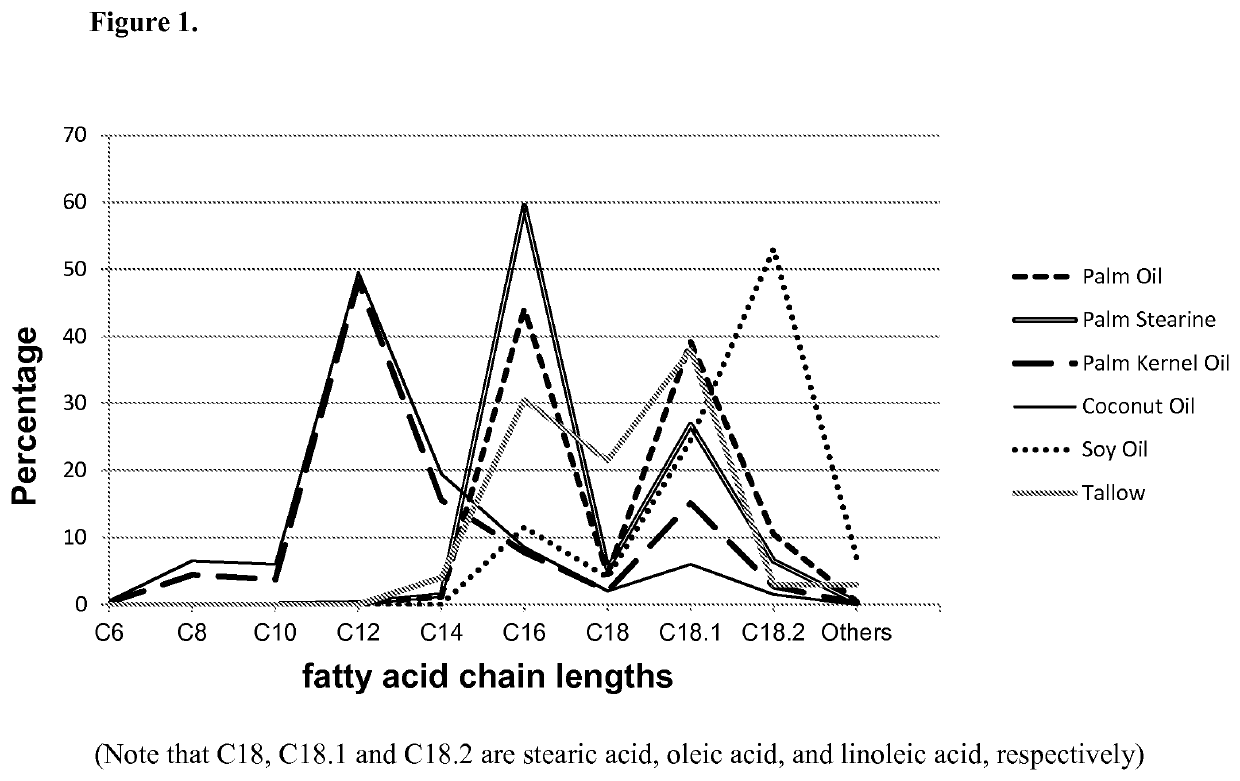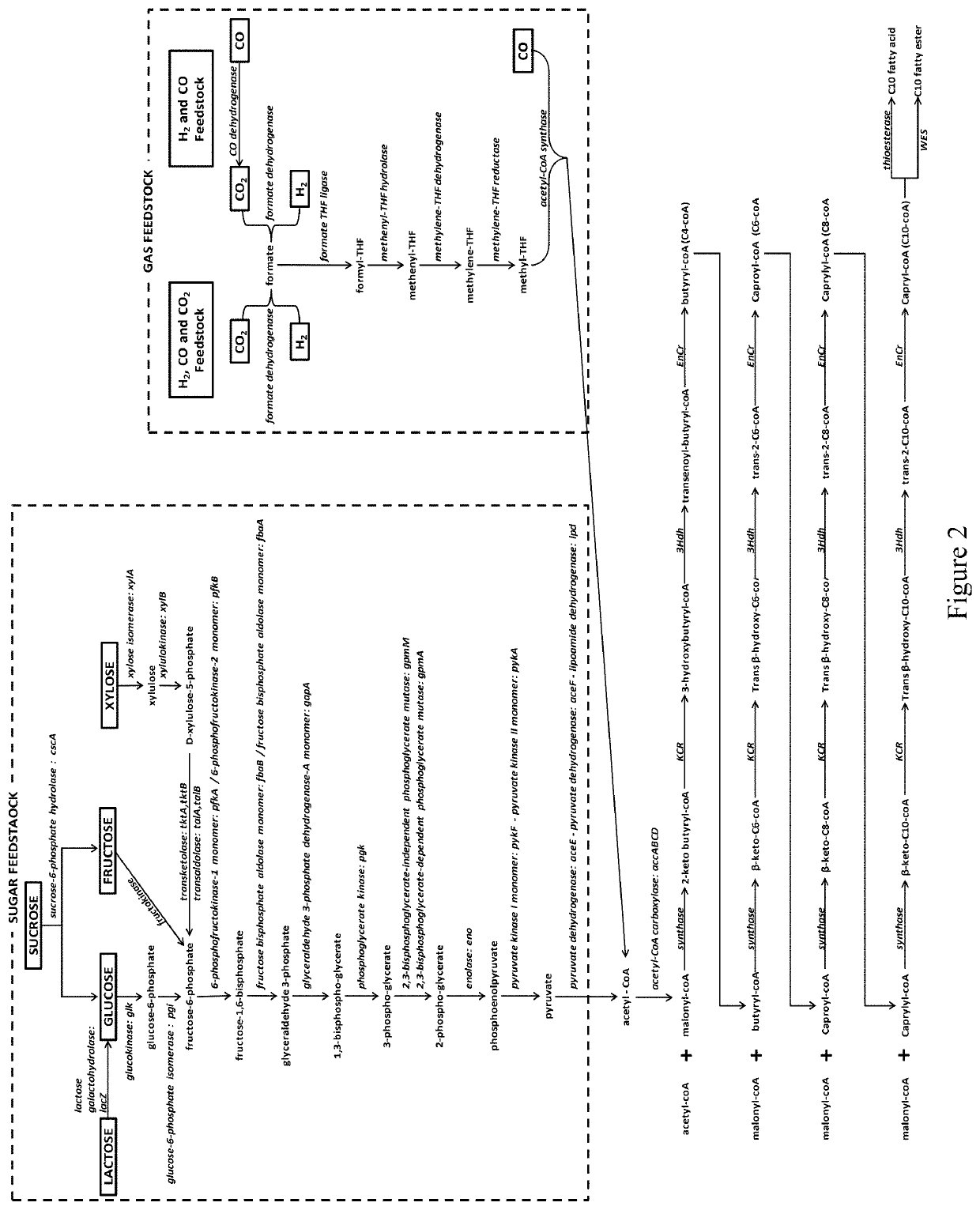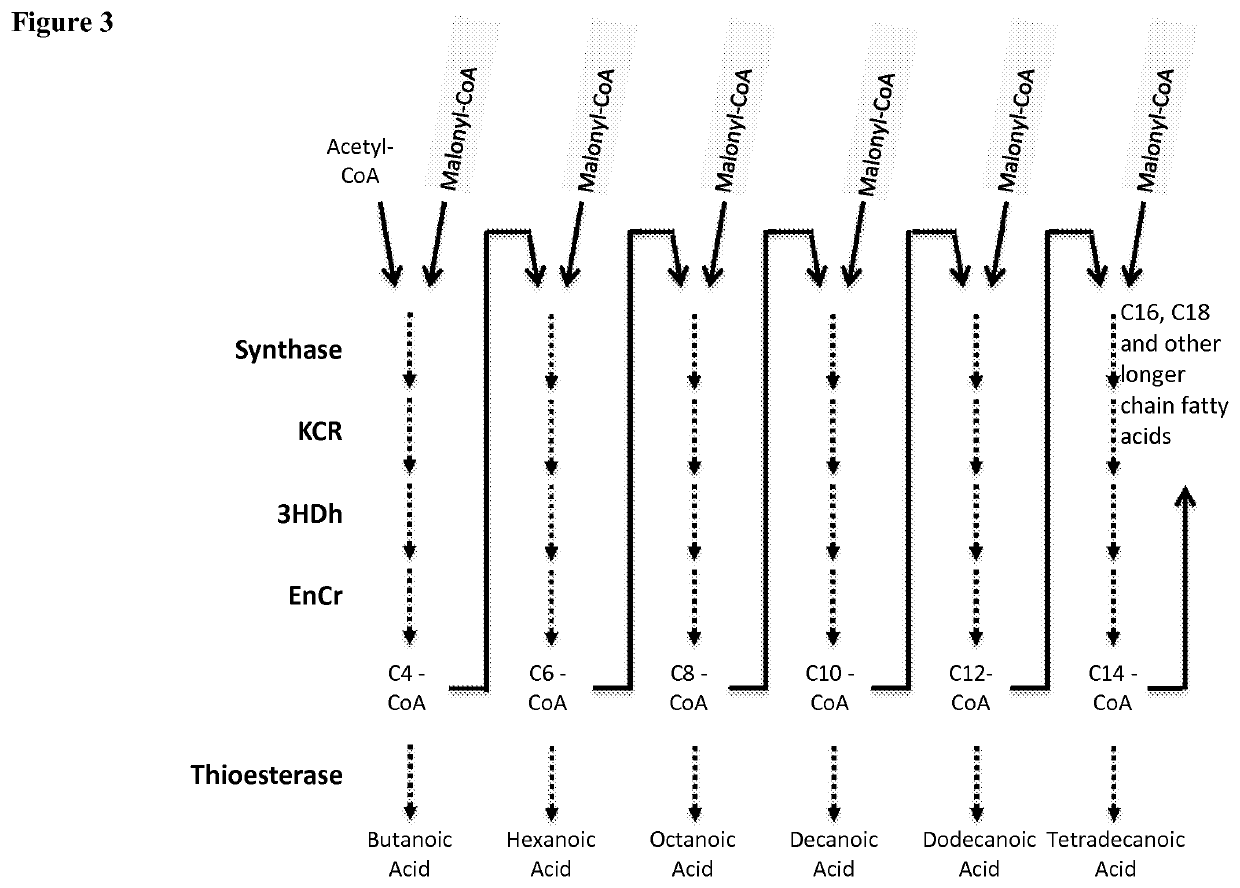Microorganisms and methods for the production of fatty acids and fatty acid derived products
a technology of fatty acids and microorganisms, applied in the direction of enzymology, lysine, transferase, etc., can solve the problems of limiting the effectiveness of such processing procedures, unable to isolate relatively high concentrations of fatty acids, and current fatty acid production methods that require costly feedstock processing procedures
- Summary
- Abstract
- Description
- Claims
- Application Information
AI Technical Summary
Benefits of technology
Problems solved by technology
Method used
Image
Examples
example 1
ants
[0252]The enzyme NphT7 is a 3-keto-acyl-CoA synthase that is active with acetyl-CoA as the primer and malonyl-CoA as the extender donor to generate a 3-keto-C4-CoA product; the native enzyme has no detectable activity on longer chain primers. Residue modifications were made to NphT7 to alter the acyl-CoA binding pocket to accept substrates with chain lengths greater than or equal to 4 carbons. These modifications are single amino acid changes, combinations of single amino acid changes, and targeted structural loop modifications that allow the condensation reaction of acyl-CoAs with chain lengths greater than or equal to 4 carbons, such as C4-CoA and C6-CoA, with malonyl-CoA. The modifications were made based on the following criteria:
[0253](a) Examination of the crystal structure of a related enzyme, the fabH from Mycobacterium tuberculosis (structure 1U6S in the Protein DataBase) identified the residues in Table 16 that contact the acyl chain. The corresponding residues in NphT...
example 2
s for Identifying 3-Ketoacyl-CoA Synthase Candidates
[0258]NphT7 is an ideal place to begin forming a strategy for identifying other 3-ketoacyl-CoA synthase candidates because unlike type II FAS 3-ketoacyl-ACP synthases (KAS) that uses malonyl-ACP as an extender, it can perform the targeted reaction using malonyl-CoA and therefore, homologs of NphT7 would likely have maintained specificity for malonyl-CoA. In addition, KAS III from various organisms have been characterized by crystal structures and biochemical assays to define substrate binding sites and substrate specificities. Unlike NphT7, KAS III from various organisms have shown different specificity for longer or branched acyl-CoA . There is similar information available for KAS I and KAS II but unlike KAS III that utilizes acyl-CoA as a substrate for the condensation reaction, they require acyl-ACP as a substrate. Therefore, crystal structures of known KAS III along with biochemical data provide guidance in identifying conserv...
example 3
NphT7 Variants and / or fabH Homologs and Thioesterases to Produce Fatty Acids with Specified Chain Lengths
[0310]While mutants of NphT7 were engineered that are capable of extending acyl-CoAs of chain length C4, C6, and C10, the specific activities of these enzymes are relatively low for the higher chain lengths. The extension by 2 carbon lengths of acyl-CoAs to form 3-keto-acyl-CoAs is a reaction also carried out by keto-acyl-CoA synthases known as KASIII enzymes, encoded by fabH gene homologs. A number of such gene homologs were synthesized using codons for optimal expression in E. coli by a commercial DNA synthesis provider (DNA2.0) and fused with 6 His residues at the N-terminus for purification of the proteins by affinity chromatography. The genes were expressed in E. coli and KAS activity was assayed using the DTNB assay for CoA-SH release from the condensation of malonyl-CoA with acyl-CoAs of varying chain lengths. Table 20 lists the enzyme homologs with sufficiently high level...
PUM
| Property | Measurement | Unit |
|---|---|---|
| chain length | aaaaa | aaaaa |
Abstract
Description
Claims
Application Information
 Login to View More
Login to View More - R&D
- Intellectual Property
- Life Sciences
- Materials
- Tech Scout
- Unparalleled Data Quality
- Higher Quality Content
- 60% Fewer Hallucinations
Browse by: Latest US Patents, China's latest patents, Technical Efficacy Thesaurus, Application Domain, Technology Topic, Popular Technical Reports.
© 2025 PatSnap. All rights reserved.Legal|Privacy policy|Modern Slavery Act Transparency Statement|Sitemap|About US| Contact US: help@patsnap.com



